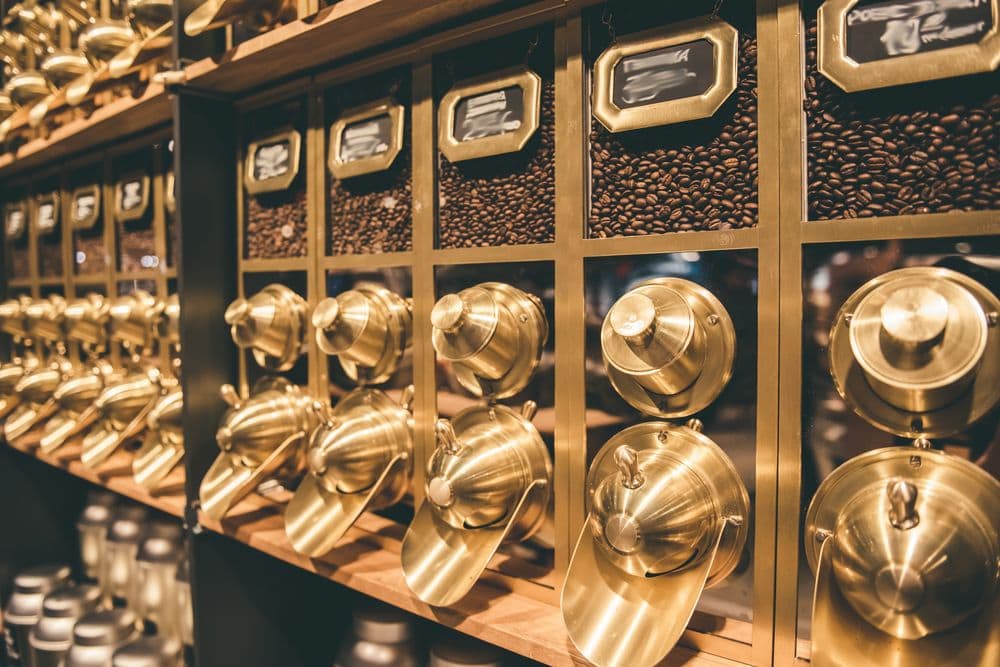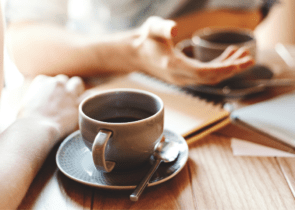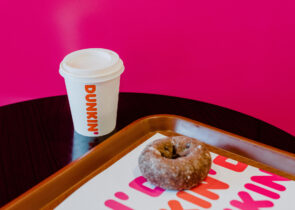If you’re a dedicated coffee fan as much as we are, then you may have considered kicking your coffee addiction up a level.
Although coffee is delicious to drink, it’s also delicious to eat! Maybe you’ve heard of a friend or relative enjoying some roasted coffee beans as a snack, or maybe you’ve already tried them yourself. Regardless, we’re die-hard fans of this tasty treat, and we’ve compiled everything you need to know if you’d like to try it as well!

Coffee: Just Beans, Or Something More?
Before we get into the nitty-gritty of eating coffee beans, it’s important to discuss what exactly coffee beans are. Little known to some, coffee beans aren’t really beans at all, they’re seeds. These seeds lie within the fruit of the coffee, and the surrounding mucilage that the seeds are wrapped in is what is removed during coffee processing.
Coffee processing is the method of stripping away the outer fruit and gooey-like mucilage that surrounds the seeds. Once the seeds have been removed, they are roasted to a certain amount and then packaged for consumer purchasing.
Eating Coffee Beans: The What, How, and Why
Coffee addicts just like us have been enjoying snacking on coffee beans for quite a while. The idea of eating coffee beans has been around for a very long time, even before brewing and drinking coffee became the norm. In the past, coffee beans were often mixed with animal fats and consumed as a snack for an extra boost of energy for people to consume. Most individuals would snack on these while traveling, working, or hunting.
There are several ways to turn coffee beans into a savory snack to munch on, whether they’re roasted and sweetened or smothered in chocolate. You might have already seen chocolate-covered coffee beans on the counter or shelves of your local coffee shop or supermarket, and this is normally the most popular way that many enjoy them.
So, How Does It Taste?
We should also note that we don’t recommend eating coffee beans while they’re still green and unroasted. Eating coffee beans unroasted is completely safe, though they are harder to bite and chew than roasted beans. Furthermore, many people may not enjoy unroasted beans because of the taste. Unroasted coffee beans taste earthy and grassy and are more acidic than roasted coffee beans. This is because the roasting process is what encourages the woody, nutty, smoky, caramel flavors to emerge from the beans.
On the other hand, the majority of coffee lovers enjoy roasted beans. The bold, robust flavor and somewhat gritty texture of whole beans will make any coffee fanatic’s mouth water. However, the flavor does depend on the certain roast of the beans themselves. From light to dark, choosing the roast will also decide how much flavor has been highlighted in the coffee. Typically, medium or darker roasts may be more enjoyable for most because they tend to be rich with oils and more of a robust flavor.
Is It Healthy?
Since you’re eating coffee beans in the whole form, you’re going to receive more flavor as well as substance. And with this, there are some health pros and cons that you should know about beforehand.
The Pros
Many scientists and nutritionists agree that the positives of coffee consumption greatly outweigh the negatives. Two ways in which coffee beans are good for your health are that they provide a hefty amount of fiber, and also because they have a high amount of antioxidants, specifically phenolic compounds. Some of the antioxidants have been connected to preventing illnesses such as cardiovascular disease and inflammation.
Other research has shown that coffee could hold key ingredients to protecting against type 2 diabetes, liver disease, liver cancer, and Parkinson’s disease. It also has several mental health benefits as well. Coffee consumption has been connected to the enhancement of cognitive function, as well as the decline in the risk of depression in some adults.
The Cons
Just like with anything else, too much of a good thing won’t be good for long. It’s important to keep in mind your medical history, even minor ones, not only if you’re considering eating coffee beans in general, but ESPECIALLY if you’re planning on eating large amounts at once. Since coffee beans contain antioxidants and caffeine, this can have a significant impact on your body if you don’t monitor your coffee bean consumption.
For example, eating too many coffee beans can lead to increased heartburn, increased heart rate, and other unpleasant side-effects. Not only this but too many coffee beans can also have a laxative effect, but it can lead to high cholesterol over time if consumed continuously. If you are pregnant, breastfeeding, or have any medical history that forces you to exclude or limit your caffeine intake, then you may want to reconsider your consumption of or amount of roasted coffee beans that you’re consuming.
If you have questions regarding the effects that eating coffee beans may have on your overall health, make sure to consult your doctor first before deciding to make coffee beans a daily snack.
Caffeine
We all know that coffee is a high source of caffeine, which is why many of us love to enjoy it before we start our day every morning. However, the caffeine boost that you receive when you eat coffee beans packs more of a punch. Coffee beans can provide even MORE caffeine than a cup of black coffee but in a much more concentrated and potent form. In fact, in comparison to one cup of black coffee, a single serving of 28 chocolate-covered coffee beans has about 3.5 times the amount of caffeine.
The primary explanation for this is that when you brew coffee grounds, a portion of the caffeine contained in the coffee grounds is washed away through the water filtration that occurs while brewing. When you consume a whole coffee bean however, you receive all of the caffeine that’s present within the bean. Furthermore, you can consume caffeine at a quicker rate since it will actually absorb through the lining and gums of your mouth.
Preparing Coffee Beans at Home
If you’re interested in trying your hand at testing some delicious coffee bean recipes at home, there are several ideas out there for you to experiment with. So tidy up your kitchen, gather your ingredients, and buckle up, cause we’re about to open up a whole new realm of coffee addiction!
The Basic Beans
And of course, there are just the good ‘ole fashion coffee beans. Some coffee junkies love to enjoy these exactly as they are, which is totally fine in our book. If you enjoy the simplicity of just the coffee beans themselves, then you’ll get the pleasure of having to skip a step when it comes to preparing coffee beans for consumption. The only requirement you’ll need for this is choosing your favorite roast.
Chocolate-Covered Coffee Beans
The most beloved recipe in the coffee-bean-eating world, chocolate covered coffee beans are such a popular favorite due to their ability to combine two of the world’s most addictive sweet treats. To begin making this delicious delicacy, you’ll need your favorite chocolate, whole roasted coffee beans (we recommend a medium or a dark roast), a microwave, a baking tray and parchment paper, and a fridge or freezer.
First, break your designated chocolate up and melt it in a microwave (a double broiler will also work fine). Once all of the chocolate has been melted, remove it from the heat and allow it to cool slightly, and begin dipping the coffee beans in the mixture. After the bean has been covered, place it on the parchment paper on the baking tray. Then, once all of the beans have been dipped in the chocolate and placed on the tray, place it in the fridge to cool for 2 hours, or the freezer to cool for one hour. Once they’ve solidified, you can take them off of the tray and begin snacking!
Dirty Chai Chocolate-Covered Coffee Beans
This recipe, similar to the classic chocolate-covered coffee bean recipe, involves a variety of herbs and spices to give you a delicious dirty-chai twist of flavor. Some of the spices you’ll need are cinnamon, ginger, cardamom, black pepper, and ground cloves. You’ll need 2 cups of chocolate, 1 cup of roasted beans, 1 teaspoon of cinnamon, as well as 1/2 teaspoon of ginger, and 1/4 teaspoon of cardamom, black pepper, and ground cloves.
The steps for making these dirty chai chocolate-covered are similar to the chocolate-covered coffee beans, the only difference being mixing in the spices with the chocolate.
Frequently Asked Questions:
We understand if you still have a little confusion about how to eat coffee beans. Here are some frequently asked questions and answers about your new favorite snack to munch on.
Are Coffee Grounds Okay To Eat Too?
Yes, they are! Just like whole coffee beans, it's also important that you consume coffee grounds in moderation. Coffee grounds may work better for those who have sensitive teeth, or for those who may not enjoy crunching on whole coffee beans.
Not only are coffee grounds safe for consumption, but they can serve a variety of other purposes as well. Many individuals use leftover coffee grounds for body scrubs, insect repellant, plant fertilizer, etc.
Can I Feed Coffee Beans To My Pet?
Caffeine, in general, can be toxic and potentially fatal to dogs and cats, especially animals of a smaller size. Since our pets aren't dependant on caffeine to get through their day like some of their coffee-obsessed owners, a generous amount of caffeine can potentially make your fur-baby sick.
Though the caffeine we may receive when we eat coffee holds some benefits, it has no health benefits for pets.
However, one or two sniffs or licks of a coffee bean won't do much harm to your furry friend. But that should be all you give to them. Even a small taste of anything that has caffeine, especially coffee beans, should be closely monitored by the pet owner.
Do Eating Coffee Beans Help With Weight Loss?
If you consume them in moderation and without any added sugar or sweeteners (yes, that includes chocolate) then yes, they can help you lose weight. If you eat a handful of coffee beans as a snack instead of chips, popcorn, or chocolate, then this substitution can spare you from a few extra unnecessary calories.
Coffee beans have zero added fats, sugars, and carbohydrates, and only contain about 10 calories per serving. In addition to this, t's a great way to get your heart pumping and awaken your senses before a workout. In fact, it's so effective that many gym enthusiasts eat coffee beans in the morning before beginning their workouts. This provides an extra push of energy, which is useful before you begin pumping iron or prepping for a high cardio day.
Wrapping Up
Here at Roasty, we always support a healthy coffee relationship with coffee, and that includes both drinking and eating it. If you’ve been sticking to your usual cup of coffee and you’ve been considering trying upgrading to eating whole beans, you can easily try this on your own in the comfort of your own home if you’d like! From robust flavor to a variety of health benefits, enjoying a handful of whole roasted coffee beans is an experience you won’t want to miss the opportunity to try.
Happy caffeinating!







